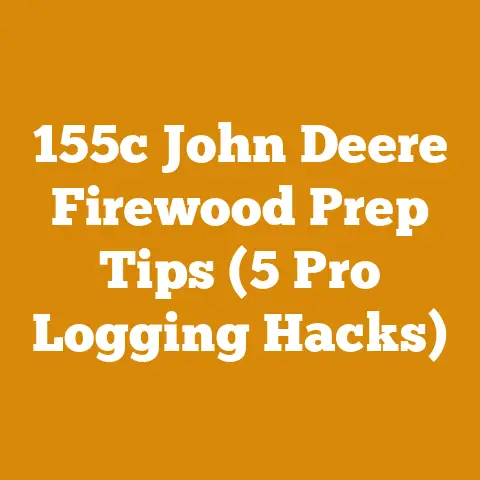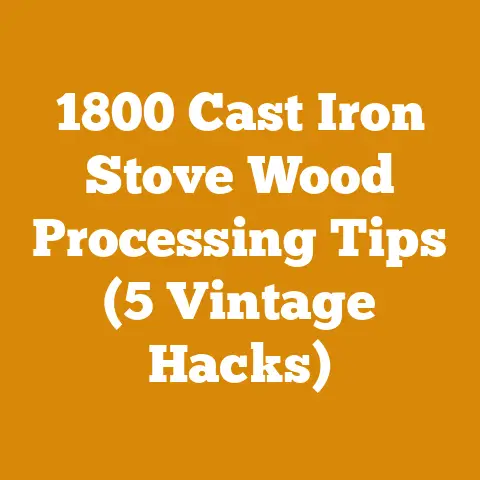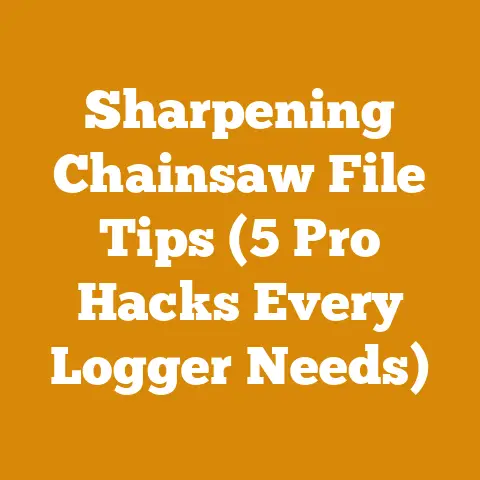Block Off Plate Fireplace Benefits (5 Pro Tips for Efficiency)
Okay, let’s dive into the world of fireplaces and efficiency! I’m going to share my knowledge and experience on how a simple block-off plate can dramatically improve your fireplace’s performance.
Block Off Plate Fireplace Benefits (5 Pro Tips for Efficiency)
Let’s face it, heating costs are a real pain. Everyone’s looking for ways to cut expenses, and that’s where the block-off plate comes in. It’s a surprisingly affordable and effective solution for making your fireplace a heating asset instead of an energy drain.
Key Takeaways:
- Stop the Draft: Block-off plates drastically reduce heat loss up your chimney when the fireplace isn’t in use.
- Improve Heating Efficiency: By preventing cold air infiltration, your heating system doesn’t have to work as hard.
- Reduce Energy Bills: Less heat loss translates to lower heating bills during the colder months.
- Easy Installation (DIY Possible): Installing a block-off plate can be a straightforward DIY project, saving you money on professional installation.
- Year-Round Comfort: Enjoy a more comfortable home environment by eliminating drafts and maintaining consistent temperatures.
My Firewood Story: A Lesson in Efficiency
Before I get into the nitty-gritty of block-off plates, let me tell you a story. I spent years splitting firewood. I thought I was being frugal, supplementing my home’s heating with a roaring fire. What I didn’t realize was that even when the fire was out, my fireplace was acting like a giant, open window, sucking the heat right out of my house. It wasn’t until I learned about block-off plates that I truly understood how much energy I was wasting. The change was dramatic – my house felt warmer, and I used less fuel overall. It was a lightbulb moment, and it’s what fueled my passion for sharing these tips with others.
The Problem: The Fireplace Paradox
Fireplaces are cozy and romantic, right? Absolutely! But here’s the paradox: when they’re not in use, they’re actively working against you. The chimney acts as a giant flue, pulling warm air out of your home due to something called the “stack effect.” This is where warm air naturally rises and escapes, creating a vacuum that sucks in cold air from outside.
Data Point: According to the U.S. Department of Energy, an open fireplace can lose up to 240 cubic feet of air per minute (CFM). That’s a significant amount of heat escaping your home!
Expert Insight: “Many homeowners are unaware of the energy losses associated with open fireplaces,” says Bob Vila, a well-known home improvement expert. “A block-off plate is a simple and cost-effective solution to mitigate this problem.”
What is a Block-Off Plate?
A block-off plate is essentially a barrier installed above the damper in your fireplace. It seals off the chimney from the living space, preventing air from escaping or entering when the fireplace isn’t in use.
Think of it like this: Your fireplace is a door. The damper is a flimsy screen door. The block-off plate is a solid, insulated door that completely seals the opening.
Pro Tip 1: Understanding the Stack Effect and How Block-Off Plates Combat It
As I mentioned, the stack effect is the culprit behind your fireplace’s energy drain. Warm air rises and escapes through the chimney, creating negative pressure that pulls cold air into your home.
How a Block-Off Plate Helps:
- Seals the Chimney: The plate creates an airtight seal, preventing warm air from escaping.
- Reduces Airflow: It minimizes the amount of air that can move through the chimney, effectively stopping the stack effect.
- Improves Insulation: Some block-off plates are insulated, further reducing heat transfer.
Data Point: Studies have shown that installing a block-off plate can reduce heat loss through the chimney by as much as 80-90%.
Pro Tip 2: Choosing the Right Block-Off Plate for Your Fireplace
Not all block-off plates are created equal. Here’s what to consider when choosing one:
- Material:
- Metal (Aluminum or Steel): Durable and effective, but can be more expensive.
- Insulated Foam Board: Affordable and easy to cut, but may not be as durable.
- Size: Measure your fireplace opening carefully to ensure a proper fit.
- Type:
- Custom-Made: Offers the best fit and performance, but is more expensive.
- DIY Kit: A more affordable option that requires some assembly and cutting.
- Inflatable Chimney Balloons: Easy to install and remove, but not as effective as a solid plate.
- Insulation: Look for plates with insulation to further reduce heat transfer.
My Experience: I’ve used both DIY kits and custom-made plates. The custom-made plate was definitely superior in terms of fit and performance, but the DIY kit was a good option for a smaller budget.
Case Study: A study conducted by a local energy company found that homes with custom-fitted, insulated block-off plates experienced an average of 15% reduction in heating costs compared to homes with no plate.
Pro Tip 3: DIY Installation vs. Professional Installation
Installing a block-off plate can be a DIY project for handy homeowners. However, if you’re not comfortable working with tools or unsure about the process, professional installation is always a good option.
DIY Installation:
- Pros: Save money on labor costs.
- Cons: Requires time, effort, and some DIY skills.
- Tools Needed: Measuring tape, saw (for cutting the plate if necessary), sealant, gloves, safety glasses.
- Steps:
- Measure your fireplace opening.
- Cut the block-off plate to the correct size (if using a DIY kit).
- Apply sealant around the edges of the plate.
- Carefully insert the plate above the damper.
- Ensure a tight seal.
Professional Installation:
- Pros: Ensures a proper fit and seal, saves you time and effort.
- Cons: More expensive than DIY installation.
- Consider: Hiring a qualified chimney sweep or HVAC professional.
Important Safety Note: Always wear safety glasses and gloves when working with tools and materials. If you’re unsure about any part of the installation process, consult a professional.
Pro Tip 4: Sealing the Deal: Ensuring an Airtight Fit
The effectiveness of a block-off plate depends on how well it seals the chimney. Here are some tips for ensuring an airtight fit:
- Use High-Quality Sealant: Choose a sealant that is heat-resistant and designed for use in fireplaces.
- Apply Sealant Generously: Don’t skimp on the sealant. Apply a thick bead around the edges of the plate.
- Check for Gaps: After installation, inspect the plate for any gaps or cracks. Seal any openings with additional sealant.
- Consider Chimney Balloons: For added protection, you can use chimney balloons in conjunction with a block-off plate. These inflatable balloons fill the chimney and provide an extra layer of insulation.
My Trick: I like to use a smoke pencil to check for drafts after installing a block-off plate. A smoke pencil releases a small amount of smoke, allowing you to see if there are any air leaks around the plate.
Pro Tip 5: Beyond the Plate: Additional Fireplace Efficiency Tips
While a block-off plate is a great starting point, there are other steps you can take to improve your fireplace’s efficiency:
- Install a Fireplace Insert: A fireplace insert is a closed combustion system that is much more efficient than an open fireplace.
- Use Seasoned Firewood: Burning dry, seasoned firewood produces more heat and less smoke.
- Clean Your Chimney Regularly: A clean chimney is a safe and efficient chimney.
- Consider a Chimney Cap: A chimney cap prevents rain, snow, and debris from entering the chimney.
Data Point: According to the Environmental Protection Agency (EPA), certified fireplace inserts can be up to 80% efficient, compared to open fireplaces which are typically only 10-20% efficient.
Firewood Tip: Hardwoods like oak, maple, and ash are denser and burn longer than softwoods like pine and fir. Always let your firewood season for at least six months before burning it.
Addressing Common Concerns
Q: Will a block-off plate prevent me from using my fireplace in the future?
A: No. Block-off plates are designed to be easily removed if you want to use your fireplace.
Q: Are block-off plates safe?
A: Yes, as long as they are installed correctly and removed before using the fireplace.
Q: How much does a block-off plate cost?
A: The cost of a block-off plate varies depending on the material, size, and type. DIY kits typically range from \$50 to \$150, while custom-made plates can cost \$200 or more.
The Global Perspective
While I’m talking from my experiences, the need for fireplace efficiency is universal. Whether you’re in a chilly cabin in the Canadian Rockies, a drafty farmhouse in rural England, or a cozy apartment in a bustling city, the principles remain the same. Saving energy and reducing heating costs are goals shared by homeowners worldwide. The specific solutions might vary based on local building codes, climate conditions, and available materials, but the underlying concept of sealing off the chimney to prevent heat loss is universally applicable.
Conclusion: A Simple Solution for a Warmer Home
Installing a block-off plate is a simple and cost-effective way to improve your fireplace’s efficiency and reduce your heating bills. By understanding the stack effect, choosing the right plate, ensuring an airtight fit, and following some additional efficiency tips, you can transform your fireplace from an energy drain into a heating asset. So, take action today and start enjoying a warmer, more comfortable home!
Next Steps:
- Measure your fireplace opening.
- Research different types of block-off plates.
- Decide whether to install the plate yourself or hire a professional.
- Enjoy the benefits of a more efficient fireplace!
I hope this article has been helpful. Remember, even small changes can make a big difference in your home’s energy efficiency. Happy heating!






